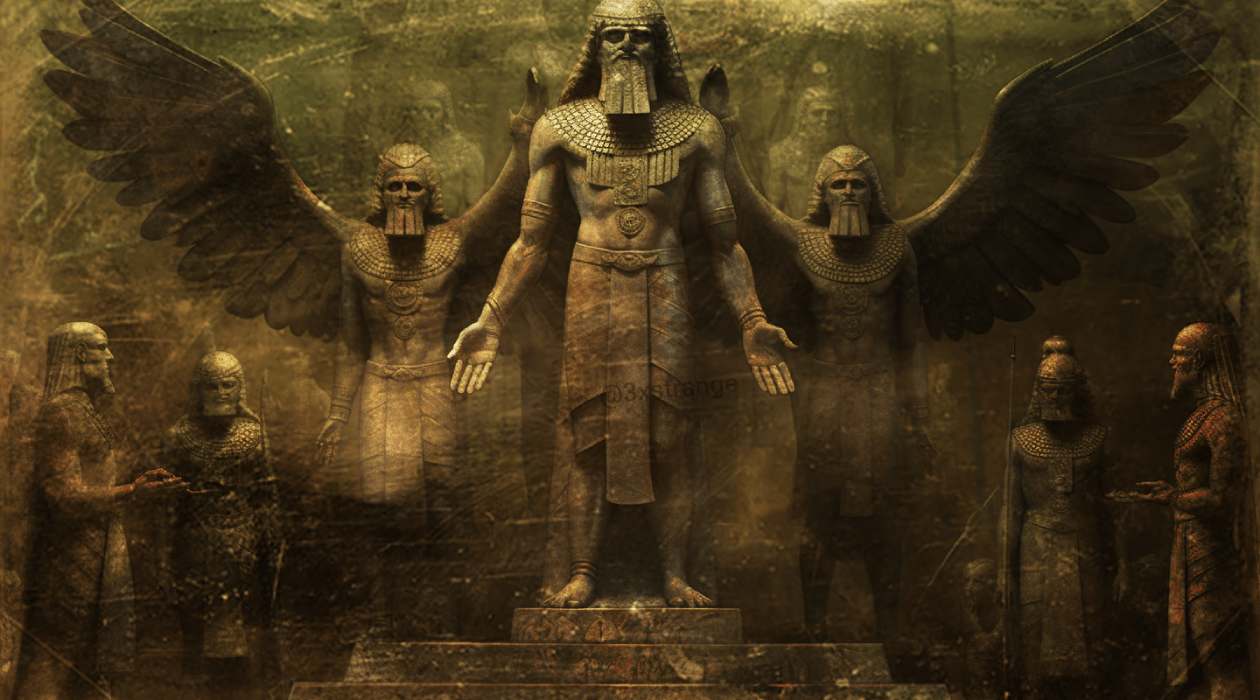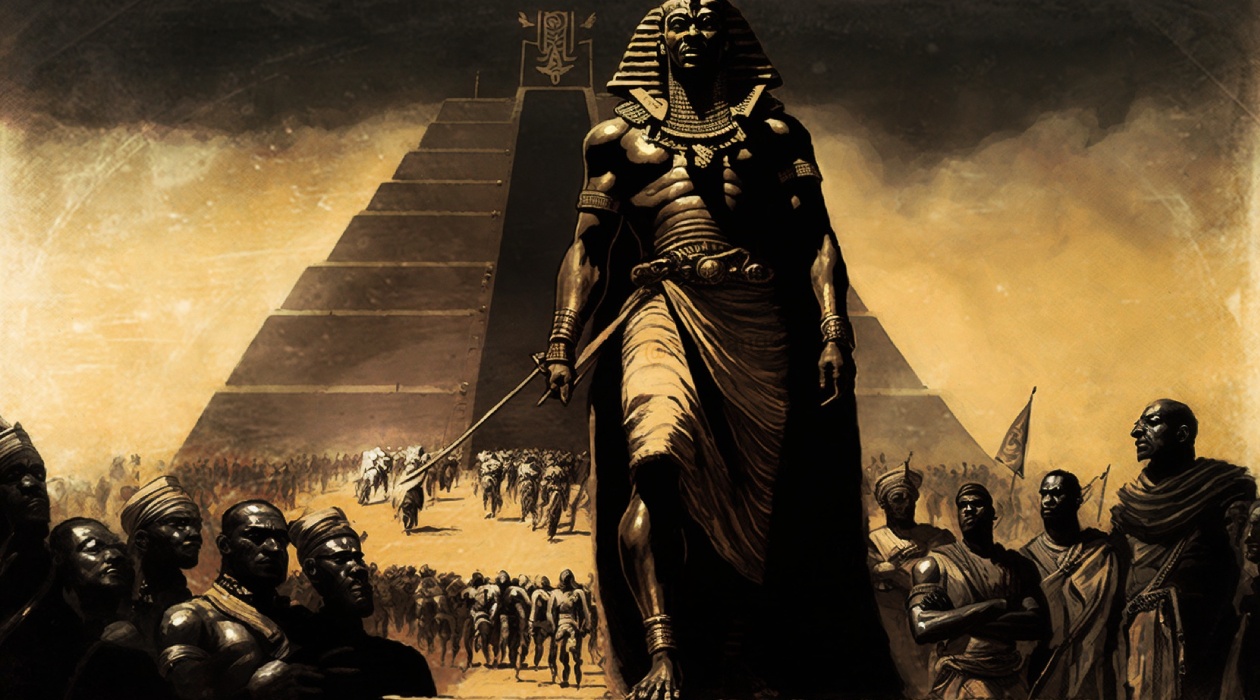Archeology
WWII plane crash discovered in Oregon
 Loggers made the discovery on private property near Rockaway Beach earlier this week.
Loggers made the discovery on private property near Rockaway Beach earlier this week.
Tillamook County Sheriff Todd Anderson said the Pentagon was concerned about possible remains of two veterans whose families would need to be notified.
According to Anderson, the aircraft was discovered on private logging land about a half mile inland between the towns of Wheeler and Rockaway beach.
Crews saw a wing, tail section, landing gear and debris from the Curtiss SB2C Helldiver in a heavily wooded area, OSP reported. The debris field was spread out over about 200 yards.
OSP and defense department officials were concerned about preserving the site until their investigation could be finished. A bomb disposal team said there was no evidence of any explosives.
Investigators were looking into whether the plane crashed on a military mission or was later purchased by someone prior to the crash.
Officials from the Joint Prisoner of War / Missing in Action Accounting Command (JPAC) in Honolulu and Navy Region Northwest were also investigating pending any human remains are found.
Source: discoveryon.info
Archeology
The Anunnaki: Ancient Aliens in the Bible?
The Anunnaki are a group of deities who are mentioned in Sumerian mythology. They are said to have come from a planet called Nibiru and are credited with creating humanity. Some people believe that the Anunnaki are actually aliens and that they visited Earth thousands of years ago.

The Anunnaki are a group of deities who are mentioned in Sumerian mythology. They are said to have come from a planet called Nibiru and are credited with creating humanity. Some people believe that the Anunnaki are actually aliens and that they visited Earth thousands of years ago.
The evidence for the existence of the Anunnaki is mainly circumstantial. There are no physical remains of Nibiru, and there is no scientific consensus on whether or not aliens have visited Earth.
However, some ancient texts mention the Anunnaki, and there are several similarities between Sumerian mythology and modern UFO stories.
One of the most famous pieces of evidence for the existence of the Anunnaki is the Enuma Elish, a Babylonian creation myth.
The Enuma Elish tells how the Anunnaki came to Earth and created humanity. According to the Enuma Elish, the Anunnaki were originally gods who lived in the heavens.
However, they became tired of living in the heavens, so they decided to create a new world where they could live.
They created Earth, and they created humanity to work for them.
The Enuma Elish is just one of many ancient texts that mention the Anunnaki. Many ancient artifacts depict the Anunnaki. One of the most famous artifacts is the Gudea Cylinder, a Sumerian clay cylinder representing the God Ningishzidda, often identified with the Anunnaki.
The similarities between Sumerian mythology and modern UFO stories are also striking. In both cases, there are stories of aliens who come to Earth from a distant planet.
In both cases, the aliens are said to be taller and more intelligent than humans. And in both cases, the aliens are said to impact human culture profoundly.
Of course, the similarities between Sumerian mythology and modern UFO stories could be coincidental. However, it is also possible that the similarities prove that Anunnaki is real. If the Anunnaki did visit Earth thousands of years ago, they left behind stories and artifacts passed down through the generations.
The possibility that the Anunnaki are accurate is an exciting one. It would mean that we are not alone in the universe and that our history is much more complex than we ever imagined.
If you are interested in learning more about the Anunnaki, do some research on your own. There are some books and websites that can provide you with more information.
The Evidence for the Anunnaki
The evidence for the existence of the Anunnaki is mainly circumstantial. There are no physical remains of Nibiru, and there is no scientific consensus on whether or not aliens have visited Earth.
However, many ancient texts mention the Anunnaki, and some similarities exist between Sumerian mythology and modern UFO stories.
One of the most famous pieces of evidence for the existence of the Anunnaki is the Enuma Elish, a Babylonian creation myth.
The Enuma Elish tells how the Anunnaki came to Earth and created humanity. According to the Enuma Elish, the Anunnaki were originally gods who lived in the heavens. However, they became tired of living in the heavens, so they decided to create a new world where they could live.
They created Earth, and they created humanity to work for them.
The Enuma Elish is just one of many ancient texts that mention the Anunnaki. Some ancient artifacts depict the Anunnaki.
One of the most famous artifacts is the Gudea Cylinder, a Sumerian clay cylinder representing the God Ningishzidda, often identified with the Anunnaki.
The similarities between Sumerian mythology and modern UFO stories are also striking. In both cases, there are stories of aliens who come to Earth from a distant planet.
In both cases, the aliens are said to be taller and more intelligent than humans. And in both cases, the aliens are said to impact human culture profoundly.
Of course, the similarities between Sumerian mythology and modern UFO stories could be coincidental.
However, it is also possible that the similarities prove that Anunnaki is real. If the Anunnaki did visit Earth thousands of years ago, then it is possible that they left behind stories and artifacts passed down through the generations.
The Anunnaki and the Bible
Some people believe that the Anunnaki are mentioned in the Bible. In the book of Genesis, it is said that God created man in his image.
However, some people believe that this passage is referring to the Anunnaki.
They believe that the Anunnaki created humanity in their image and that they are the ones who taught us the knowledge that we have today.
Some passages in the Bible could be interpreted as references to the Anunnaki. For example, in the book of Ezekiel, it is said that there were “cherubim” who were “like the sons of men.”
Ezekiel 1:5: “As I looked, I saw a stormy wind coming out of the north—a great cloud with flashing lightning and surrounded by brilliant light. The center of the cloud was glowing like glowing metal, and in the center of the fire was something like four living creatures. In appearance their form was human, 6 but each of them had four faces and four wings. 7 Their legs were straight, and their feet were like the feet of a calf and gleamed like burnished bronze. 8 Under their wings on their four sides they had human hands. All four of them had faces and wings, 9 and the wings of one touched the wings of the creature on either side. Each one went straight ahead; they did not turn as they moved.”
Ezekiel 10:14: “Each of the cherubim had four faces: One face was that of a cherub, the second the face of a human being, the third the face of a lion, and the fourth the face of an eagle.”
In both of these passages, the cherubim are described as having human-like features, such as faces and hands. However, they also have animal-like features, such as wings and the faces of lions and eagles. This combination of human and animal features is characteristic of cherubim in the Bible.
The meaning of the cherubim in Ezekiel is not entirely clear. Some scholars believe that they represent the presence of God, while others believe that they represent the four gospels.
Some people believe that these cherubim are references to the Anunnaki.
Of course, there is no scientific consensus on whether or not the Anunnaki are mentioned in the Bible. However, it is an exciting possibility to consider. If the Anunnaki are accurate, then it would mean that they have been involved in human history for a long time.
The Anunnaki and Modern UFO Stories
As mentioned earlier, there are several similarities between Sumerian mythology and modern UFO stories. In both cases, there are stories of aliens who come to Earth from a distant planet.
In both cases, the aliens are said to be taller and more intelligent than humans. And in both cases, the aliens are said to impact human culture profoundly.
Some people believe that these similarities are evidence that the Anunnaki are real. They believe that the Anunnaki are still visiting Earth today and that they are the ones who are responsible for the modern UFO phenomenon.
Of course, there is no scientific evidence to support this claim. However, it is an exciting possibility to consider.
If the Anunnaki are accurate, then it would mean that they are still involved in human history.
Conclusion
The Anunnaki are a fascinating and mysterious group of beings. There is no scientific consensus on whether or not they are real, but much evidence suggests that they may be.
If the Anunnaki are accurate, then they have a profound impact on human history.
They may have created humanity, they may have influenced our culture, and they may still be visiting Earth today.
I encourage you to do some research on the Anunnaki for yourself. Many books and websites can provide you with more information.
If you want to learn more about the possibility of extraterrestrial life, then the Anunnaki are an excellent place to start.
References
Archeology
Learn The Truth About The Giant Pharaoh
In the early 1900s, a British archaeologist discovered a large mastaba belonging to a Giant Pharaoh near Girgeh in Upper Egypt,

In the early 1900s, a British archaeologist, John Garstang, made a groundbreaking discovery near Girgeh in Upper Egypt, a large mastaba belonging to a Giant Pharaoh.
Among the finds were relief fragments bearing the name of an unknown pharaoh at the time, Sanakht.
But who was the archeologist that found the Giant Pharaoh?
John Garstang was a prominent British archaeologist who lived from 1876 to 1956.
He is known for his work in the Middle East, particularly in the regions of Palestine, Syria, and Turkey.
Garstang began his career as an assistant at the Egypt Exploration Fund and later worked as a professor of archaeology at the University of Liverpool.
Garstang’s work was instrumental in developing archaeology in the Middle East, and he is remembered today as one of the most influential figures in the study of ancient Near Eastern civilizations.
In 1901 John Garstang made a groundbreaking discovery of Sanakht’s Mastaba near Girgeh in Upper Egypt.
What was found in the Mastaba K2?
Among the artifacts found in the Mastaba were fragments of a red granite sarcophagus and a limestone funerary stela, both bearing Sanakht’s name.

Relief fragment of Pharaoh Sanakht, third dynasty, circa 2670 BC. Sanakht is shown in the pose of smiting an enemy. Originally from Serabit in the Sinai.
The stela depicts the Pharaoh offering to several deities.
It includes an inscription describing Sanakht as “The one who unites the Two Lands” (Upper and Lower Egypt).
The Giant in the Mastaba
Archaeologists also found the remains of a man inside the tomb, but something was unusual about them.
Upon close examination, they found that the bones were large.
The skeletal remains were over 1.87 m (6′ 1″) tall, making him 20 cm (7.87″) taller than the average of prehistoric and later Egyptians.
Even taller than Ramses II, who was only 175 cm (5’8″).

Presumably, Sanakht’s skull was found in his Mastaba near Girgeh in Upper Egypt.
Who was the Pharaoh Sanakht?
Pharaoh Sanakht (also spelled Nebka or Hor-Sanakht) was a king of the Third Dynasty of ancient Egypt who ruled around 2700 BCE.
Sanakht’s reign was relatively short, and his role in Egyptian History needs to be more well-known.
He is believed to have been the successor of Pharaoh Djoser, who was known for commissioning the first pyramid in Egypt at the site of Saqqara.
The Saqqara contains the oldest complete stone building complex known in History.
A mastaba (a type of ancient Egyptian tomb) at Saqqara has been identified as possibly belonging to Sanakht.
But Sanakht was really a giant, or exist another explanation?
Francesco M. Galassi, from the University of Zurich, and his colleagues believe Sanakht’s unusual height resulted from gigantism.
Other earlier skeletons have been diagnosed with acromegaly, while both acromegaly and gigantism have a similar cause.
Acromegaly occurs in adulthood, and gigantism happens in childhood.
Gigantism is an extremely rare condition that happens when a child or adolescent has high levels of growth hormone in their body, which causes them to grow very tall.
The bones were found buried with honors in an elite tomb.
But usually, gigantism was associated with social marginalization in ancient times, including in Egypt.
However, a new analysis found that Sanakht was not suffering from the condition.
He was simply a remarkably tall man.
What was Sanakht’s Origin?
Scholars have suggested that the proportions of Sanakht’s long bones indicate an affinity with people of sub-Saharan African ancestry.
Some archeologists support that Pharaoh Sanakht was of Nubian (South Sudanese) origin, which would explain his height.
Who were the Nubians?
Archaeological evidence suggests that the Nile Valley, including the region that is now South Sudan, was inhabited by humans as early as the Paleolithic period (over 2 million years ago).
Over time, various groups migrated to the region, including the Nubians and other ethnicities from the neighboring areas.
The Nubians, who inhabited the Nile Valley in what is now northern Sudan and southern Egypt, had a significant influence on ancient Egyptian culture and History.
The Nubians and Egyptians interacted extensively throughout their shared History, exchanging goods, ideas, and cultural practices.
The Nubians were known for their skill in agriculture, metalworking, and trade, and they established many powerful kingdoms in the region, including the Kingdom of Kush.
Why is South Sudan people tall?

The people of South Sudan are known for their exceptional height, with an average male height of approximately 6 feet 2 inches, making them the tallest people in the world.
This is a striking contrast to the global average male height of around 5 feet 7 inches.
The reasons for this remarkable height are complex and multifaceted but may be related to genetic and environmental factors.
One possible explanation for the tall stature of the South Sudanese people is genetics.
Recent studies have identified some genetic variants that appear to be associated with increased height, and some of these variants may be more common in the South Sudanese population.
It is also worth noting that the people of South Sudan are a highly diverse group with a wide range of ethnicities and cultural backgrounds, and genetic and environmental factors may differ between these groups and contribute to differences in height.

Another factor that may contribute to the exceptional height of the South Sudanese people is their environment.
The region is characterized by high levels of sunlight and heat, which may promote the growth of long bones.
Additionally, the traditional diet of the South Sudanese people is rich in protein and other nutrients that are essential for growth and development, which may also contribute to their impressive stature.
Today, the Dinka people are the tallest in Africa and are of South Sudanese origin.
They have an average height of 6 feet, or 1.83 meters, for men and 5 feet, 10 inches, or 1.78 meters, for women.
Pharaoh Sanakht’s stature was related to genetic or environmental factors.
The exceptional height of the South Sudanese people offers a possible explanation for the Gian Pharaoh’s remarkable physical characteristics.
Discover more giants thru the History.
In Greek mythology, there were the Titans, a race of powerful and god-like beings who were said to have once ruled the world.
Similarly, in Norse mythology, there was the Jotun, a race of giants who were often portrayed as enemies of the gods.
There are several references to giants in the Bible, particularly in the Old Testament.
One of the most well-known accounts is the story of David and Goliath, where the Philistine Giant Goliath is said to have been over nine feet tall (1 Samuel 17:4-7).
The Nephilim, a group of beings described as the offspring of the “sons of God” and the “daughters of men,” is also mentioned in Genesis 6:4 and often interpreted as giants.
More information about The Giant Pharaoh
Archeology
What you know about the Unicorn is Wrong
What you know about the Unicorn may need to be corrected. What if I tell you Unicorn is or was a real animal as described in the Bible?

What you know about the Unicorn may need to be corrected. What if I tell you Unicorn is or was a real animal as described in the Bible?
Like many other world religions and mythologies, the Bible contains stories of extraordinary creatures.
In the Old Testament, we find mentions of beings such as Unicorns, the Behemoth, the Leviathan, the Nephilim, and Giants.
These creatures have captured people’s imaginations for centuries, and their potential origins are as unbelievable as their descriptions.

One of the creatures found in the Old Testament is the Unicorn.
What really is a Unicorn?
Surprisingly, it is mentioned quite a few times in the Bible.
In the Book of Numbers, the Bible describes God as a unicorn, stating:
“God brought them out of Egypt; he hath as it were the strength of an unicorn.”
– Numbers 23:22
“God brought him forth out of Egypt; he hath as it were the strength of an unicorn: he shall eat up the nations his enemies, and shall break their bones, and pierce them through with his arrows.”
– Numbers 24:8
The Deuteronomy:
“His glory is like the firstling of his bullock, and his horns are like the horns of unicorns: with them he shall push the people together to the ends of the earth: and they are the ten thousands of Ephraim, and they are the thousands of Manasseh.”
– Deuteronomy 33:17
In the Book of Job, God rhetorically asks
“Will the unicorn be willing to serve thee, or abide by thy crib? Canst thou bind the unicorn with his band in the furrow? or will he harrow the valleys after thee?”
– Job 39:9-10
In Psalm:
“Save me from the lion’s mouth: for thou hast heard me from the horns of the unicorns.”
– Psalm 22:21
“He maketh them also to skip like a calf; Lebanon and Sirion like a young unicorn.”
– Psalm 29:6
“But my horn shalt thou exalt like the horn of an unicorn: I shall be anointed with fresh oil.”
– Psalm 92:10
However, in the original Hebrew Bible, the creature is not called a unicorn but “Re-em.”
But what is a Re-em?
When the Greeks began translating the Bible, they translated the Hebrew word “Re-em” to “Monokeros,” Mono (single) Keros (Horn), which means one horn.
Similarly, the Latin speakers translated the word “Unicornis,” from which we get our word unicorn.
However, the Greeks and Romans did not feature unicorns in their mythologies.
Instead, they are featured in ancient Greco-Roman natural encyclopedias.
These ancient nature textbooks did not think unicorns were mythical beasts but real-life creatures as natural as a cow, lion, or horse.
Some scholars believe it is a case of mistaken identity, and the one-horned creature is a Rhino.

When early travelers went to faraway lands, they spoke of strange creatures they saw on their way.
For example, the Roman naturalist Pliny the Elder describes a creature as fierce animal called the Unicorn, which is the head of a stag, the feet of an elephant, and the tail of a bull, while the rest of the body is like a horse.
Scholars believe Pliny offers an imperfect and simplistic description of a rhino.
He likely heard a second or third-hand description of one and is recounting it in his book.
The definition of the unknown creature became distorted, with each telling a bit like a game of telephone.
Another possibility for the Unicorn’s identity?
The original description of a rhino may have been distorted when it first got translated.
Another explanation for the unicorn’s identity is that the Hebrew word for the unicorn, “Re-em,” actually means a creature similar to the “Rimu” animal that the nearby Acadians called the “Aurochs,” an ancient ancestor of modern-day Cattle.
Therefore, when the Bible talks about unicorns, it may refer to an ancient Bull type.

If initially, the Bible described the Unicorn as a Bull or a Rhino, I’ll let you decide.
More information about the 1998 Capão Redondo UAP Incident
-

 Archeology8 months ago
Archeology8 months agoThe Anunnaki: Ancient Aliens in the Bible?
-

 Paranormal7 years ago
Paranormal7 years ago1954 Greada Treaty – President Eisenhower form a treaty with aliens at Holloman AFB
-
Ghost14 years ago
Whatching ‘Phoonk 2′ can fetch you U$10,000
-

 True Crimes6 years ago
True Crimes6 years agoWhat You Should Know About Elisa Lam Will Scare You
-

 UFO12 months ago
UFO12 months agoThe 1966 Tully Saucer Nest
-

 UFO3 years ago
UFO3 years agoThe Day Aliens Crashed a UFO Conference – The Dolores Barrios Incident
-

 Cryptozoology7 years ago
Cryptozoology7 years agoWas Azzo Bassou the Missing Link?
-

 True Crimes5 years ago
True Crimes5 years agoChristmas Massacre – The real story of Bloody Bob Sims
-
Conspiracy14 years ago
Web site posts what it says are half million text messages from 9/11
-

 UFO6 years ago
UFO6 years agoThe day a flying saucer landed in the Hollywood Hills.



You must be logged in to post a comment Login